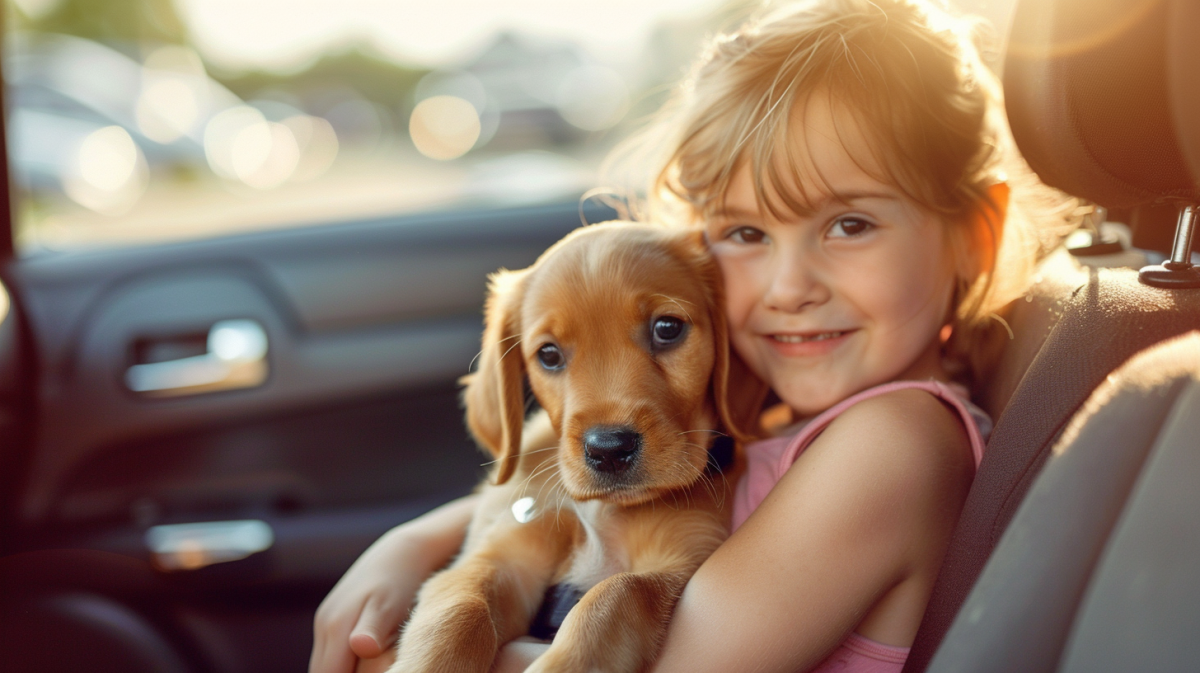Hot car safety is a critical issue that cannot be overlooked during the summer months. Leaving children or pets in a parked car can quickly become a deadly mistake. Imagine this: in only 60 minutes on a sunny, 80-degree day, the interior temperature can rise to roughly 123 degrees. Not only is that uncomfortably hot, but it is deadly to adults, children, and our fur babies, too. We talked to dads from our community who shared some of their best tips and advice for how to protect your family from the danger posed by a hot car.
What Men's Health Issues Concern You Most?
- Never leave a child or pet in a hot car as interior temperature can rise quickly and cause heatstroke.
- Keep car keys secure and put something you'll need in the back seat to guarantee a thorough car check after parking.
- Bringing a stuffed animal with you upfront can remind you of your baby in the rear-facing car seat.
- Hot car safety is essential for avoiding dangerous situations in the heat for your family and pets, and hot car safety tips can prevent hot car deaths.
Understanding the dangers of hot cars is crucial to prevent accidents and fatalities. Heatstroke, also known as hyperthermia, can occur when the body's temperature reaches 104 degrees Fahrenheit or higher, leading to organ failure and death.
Children and pets are particularly vulnerable to heatstroke, as their bodies cannot regulate temperature as effectively as adults. By following the hot car safety tips outlined in this article, you can protect your loved ones from the dangers of hot cars and enjoy a safe and comfortable summer.

What Is Hot Car Danger?
Hot car danger refers to the risk of heat stroke and other health issues that result from leaving a child or pet in a parked car, as the temperature inside a vehicle can rise rapidly and cause harm. While the statistic we opened up with about how hot it can become in an hour is shocking - this isn't a situation where you have an hour to make a run into the store and leave your child behind. The temperature inside a parked car can rise by 20 degrees in just 10 minutes, even in relatively mild outdoor temperatures. This is because sun shining in the windows turns your vehicle into a greenhouse or solar oven since the heat is trapped inside.
Opened windows will help in this situation but it isn't a dependable solution and for dangerous situations like hot car danger, where you could end up being called by a wrongful death lawyer, sometimes the easiest solution is best - just don't do it after all you don't want to be side swiped by an unexpected legal bill.
Prevention Tips For Hot Car Safety
Implementing various strategies, such as utilizing reminder systems and being mindful of scheduling during hot weather conditions, can prevent the dangers of leaving children or pets unattended in a parked vehicle.
Tip 1: Always Check the Backseat
Contributed by Dave, dad of three
Dave emphasizes the importance of always checking the backseat before locking the car and walking away. He's created a habit of placing his work bag in the backseat, ensuring he always opens the back door, preventing any risk of accidentally leaving a child behind on hot days.
Tip 2: Use a Sunshade and Crack the Windows
Contributed by Mike, father to twins
Mike suggests using sunshades on the windshield and rear windows to keep the car's interior cooler when parked. He also recommends cracking the windows slightly if safe to do so, to promote air circulation and further reduce the internal temperature.
Tip 3: Set Up Parking Reminders
Contributed by Alex, a tech-savvy dad
Alex uses smartphone technology to his advantage. He sets reminders on his phone to check his car's temperature before driving and to never leave his kids in the car unattended, even for a quick errand. This simple tech tip keeps his family safe during the blistering summer months.
Tip 4: Hydration Station in the Car
Contributed by Chris, outdoor enthusiast and father of two
Chris keeps a small cooler with water bottles in the car during summer trips with his sons. He ensures everyone stays hydrated, especially on long drives, which helps maintain everyone's comfort and safety by preventing heat-related illnesses.
Ultimately, preventing hot car dangers requires a combination of proactive measures and mindful scheduling to ensure the safety of loved ones.

Risks for Children and Pets
Children and pets left in parked vehicles are at risk of suffering from heatstroke and other heat-related illnesses due to the rapid increase in interior temperatures far more quickly than adult humans. This is in part due to their smaller mass, allowing the body to heat up faster - but also due to the smaller surface area that can be used to get rid of excess heat through sweat, breathing, and panting.
Heatstroke occurs when the body's temperature rises rapidly, causing damage to the brain and other organs. Symptoms of heatstroke in children and pets include rapid breathing, dry skin, thirst, and high body temperature. It can also cause confusion, seizures, and loss of consciousness.
If you suspect a child or pet is experiencing heatstroke, it is essential to take immediate action. Call emergency services and move the individual to a cool, shaded area. Apply cool water to their skin and use a fan to increase air circulation. Do not give them anything to drink, as they may be too disoriented or unconscious to swallow.
Prevention is key to avoiding heatstroke in children and pets. Always double-check the back seat of your car before locking the doors, and never leave a child or pet unattended in a parked car, even for a few minutes.
Hey James Hills wants you to share this!

